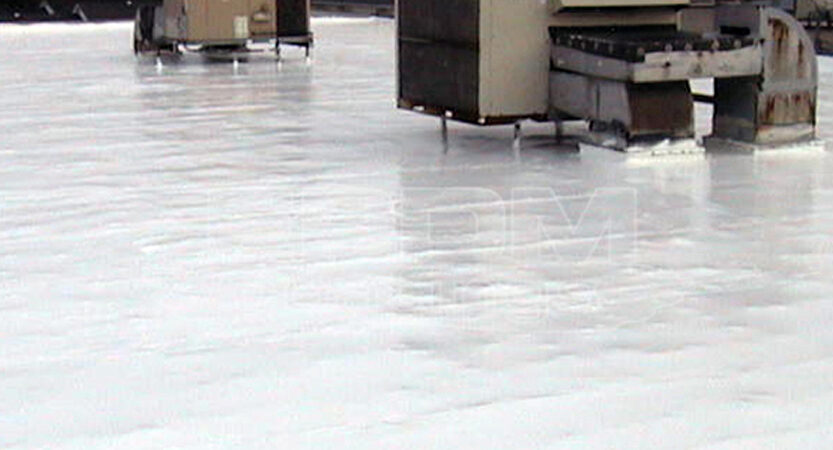A butyl rubber roof coating can offer years of service and protection from the elements and makes an affordable replacement for many types of aging commercial roofs. Because it’s liquid, butyl rubber can be installed very quickly, often requiring a fraction of the time necessary with other materials. However, you must install your roof correctly to get the protection you need and the lifespan you deserve. We’ll cover six tips to make doing so easier.
1. Deck Prep Is Critical
As with any other type of roofing material, getting the most out of your butyl rubber roof coating requires that you prepare the existing roof first. You should thoroughly clean the surface to remove oil, dirt, and debris. Mildew and mold should also be removed.
Once the roof is clean, you need to give it time to dry. Never apply a butyl rubber roof coating to a wet deck. Trapping moisture between the roof and the rubber can lead to damage. Depending on the roof’s age and the severity of the soiling, you may only need to brush the surface clean. However, some cases may require a pressure washer to remove soiling.
2. Use the Right Tools
It’s impossible to install a butyl rubber roof coating properly without the right tools. Thankfully, you won’t need any specialty equipment. That’s because this product can be applied using standard painting tools – brushes and rollers.
Simply spread it over the roof and allow it to cure. We do recommend using rollers to cover larger areas. Brushes can be used where rollers won’t fit due to space constraints. Smaller rollers can be used in these areas if you prefer, but sometimes brushes offer better finished results, particularly around roof protrusions. For very large areas, we recommend using a sprayer in addition to rollers and brushes.
3. Know Your Amount
When you spread butyl rubber roof coating across the roof deck, it goes on like paint but thicker. It’s important to know the volume you’ll need for the size of your roof. If the surface is smooth, you’ll get about 50 square feet per gallon. If the surface is rough, plan for about 40 square feet per gallon.
So, if your roof measures 500 square feet and the surface is smooth, you’ll need approximately 10 gallons of butyl rubber roof coating. However, we recommend slightly overestimating the amount you need, as this will help you account for unexpected challenges, like accidental spills.
4. Mark the Roof
If you’re not covering the entire existing roof with the butyl rubber roof coating, you’ll need to mark the borders of the installation. This ensures that your team can cover the areas that need protection while avoiding areas that shouldn’t be coated.
5. Double Up
A single butyl rubber roof coating is not enough. You’ll need two coats to ensure that it’s completely weather-resistant and waterproof. Give the first coat a chance to cure before applying the second. We recommend waiting 24 hours between applications for curing.
6. Know Your Weather Forecast
The weather will affect your installation process and time, so it’s best to know the forecast. Hot, dry weather means faster drying times. Cool, humid days mean longer drying times. We don’t recommend applying the product if the temperature is 50 degrees F or lower.
There you have them – six simple tips to make applying a butyl rubber roof coating easier and faster. With the right tools, a little time, and clement weather, it’s an easy process that should take no more than a couple of days on average.


